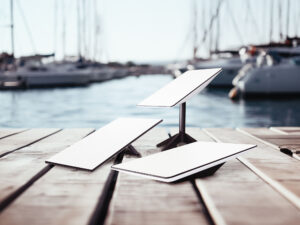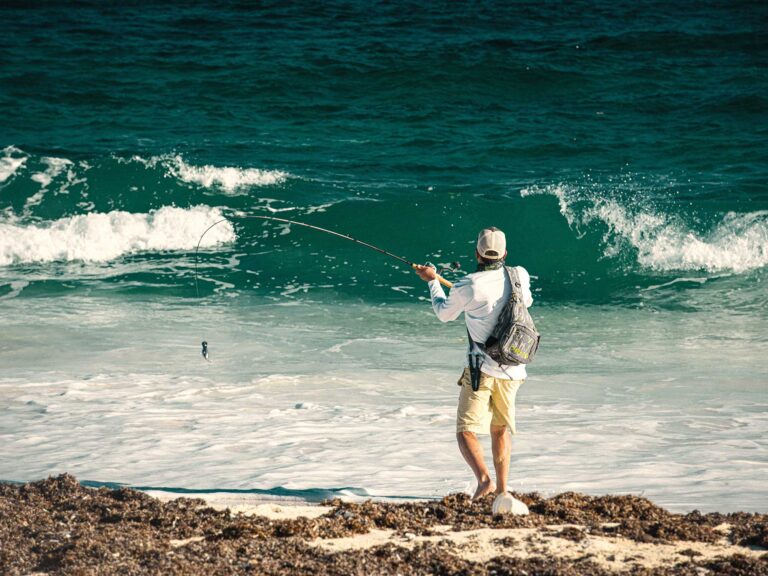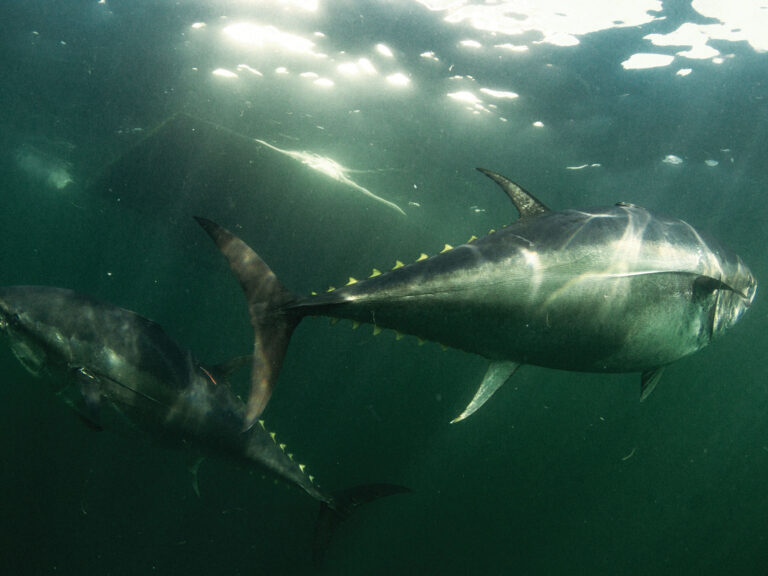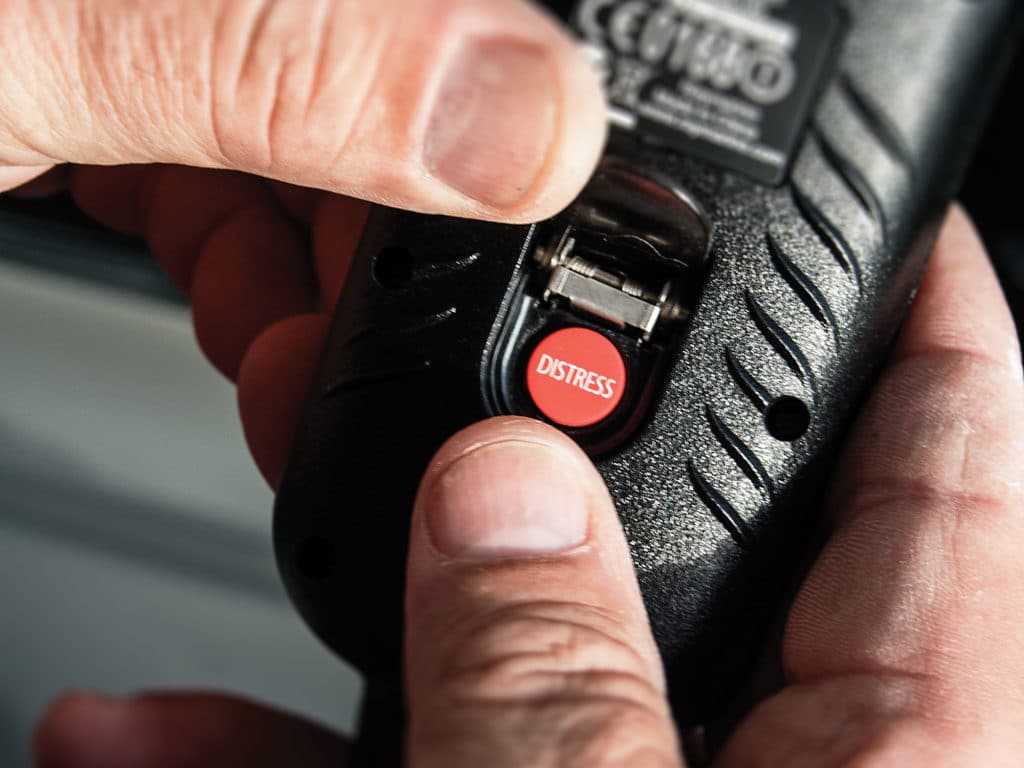
Karson Keith and three buddies were fishing 10 miles off Cedar Key, Florida, one August afternoon when their boat broke down. As they waited for a towing service, a powerful storm struck with 50-knot winds and 12-foot waves.
The crew donned life jackets, and Keith barely had time to place one Mayday call before the boat overturned. He managed to grab the emergency position-indicating radio beacon (EPIRB) before going into the water with the rest of the crew. They tied themselves together when waves started pushing them away from the boat.
The four friends drifted through the afternoon and much of the evening, but at approximately 10 p.m., a U.S. Coast Guard helicopter arrived, and a swimmer descended to rescue Keith and his buddies. They returned to Cedar Key shaken but uninjured.
It was Keith’s ACR GlobalFix iPro EPIRB that alerted the Coast Guard and guided it to the survivors, who were found 6 miles from their boat.
“I can’t explain the thoughts going through our heads, but we felt as secure as you could feel in these circumstances with the EPIRB telling us the signal was sent,” Keith wrote on the ACR Survivor Stories website (acrartex.com/survivors).
EPIRBs represent one way to automatically alert rescuers, but there are others. If you go fishing any distance from shore, you should know about each and have one or more on board.
Hot Button
Today’s VHF radios can send an automated Mayday. In an emergency, press and hold the digital selective calling (DSC )distress button (the red button labeled “distress” under the hinged shield) on your VHF for three seconds, and it will broadcast a piercing alarm and your vessel’s information.
You’ll find this feature on new fixed-mount VHFs and a few handheld models, such as the new Standard Horizon HX870. Some DSC-equipped VHFs, such as the Icom M324G, also feature built-in GPS, which is needed to send your position with a distress signal. Otherwise, you need to network the VHF radio with an onboard GPS.
You also need to obtain a maritime mobile service identity number (MMSI ) and enter it in the VHF ahead of time. This lets search-and-rescue teams know the size, description, registration and name of your vessel. Obtain an MMSI for free by visiting boatus.com/mmsi.
In addition to reaching authorities, a DSC distress alerts nearby boaters who can immediately assist in the rescue effort. If you fish in areas close to shore with significant boat traffic, this may serve you well.
However, the maximum reliable range of a handheld VHF is 4 to 5 miles; a fixed-mount version is up to 25 miles, depending on antenna height and conditions. DSC may prove ineffective if you are fishing remote waters, beyond the range for your VHF radio.
Worldwide Assistance
EPIRBs offer global reach. With self-contained batteries, EPIRBs don’t rely on your boat’s electrical system. Once activated, an EPIRB uplinks to satellites on a frequency of 406 MHz. These then downlink the beacon’s unique identifier number (UIN) and position (based on the built-in GPS) to a rescue-coordination center, which alerts first responders.
An activated EPIRB also broadcasts a homing signal on a frequency of 121.5 MHz to help search-and-rescue personnel pinpoint the device’s position. All EPIRBs are waterproof and float with the antennas upright, and many feature strobe lights to guide rescuers in the dark. EPIRBs broadcast for a minimum of 48 hours after deployment.
EPIRBs are also becoming more compact, making them suitable for recreational fishing boats under 30 feet. The new ACR GlobalFix V4 and Ocean Signal EPIRB1, for example, measure 8 and 7 inches tall, respectively.
Many EPIRBs activate automatically upon contact with water. The GlobalFix V4 offers wet activation once it is released from the bracket. You can also order a bracket that releases upon submersion.
Getting Personal
Personal locator beacons (PLBs) are based on the same system as EPIRBs but are designed to be worn on life jackets or held in hand. Though waterproof, a PLB will not float upright, so the antenna must be aimed skyward. Broadcast life is half that of an EPIRB. PLBs help rescuers locate individuals that may have drifted away from the boat or EPIRB.
For a PLB or EPIRB to be effective, the UIN must be registered with the National Oceanographic and Atmospheric Administration’s SARSAT website (beaconregistration.noaa.gov). This free registration requires your contact information, type of usage and boat description. It must be renewed every two years.
While EPIRBs and PLBs can summon rescuers from anywhere, rescue authorities require time to mobilize resources. That means it might take hours for help to arrive, but better late than never.
At sea, catastrophe strikes so quickly that you might not have the time or composure to place an effective Mayday call. That’s why automated Mayday systems, such as DSC distress, EPIRBs and PLBs, were developed. They’ll make the call that brings help your way.
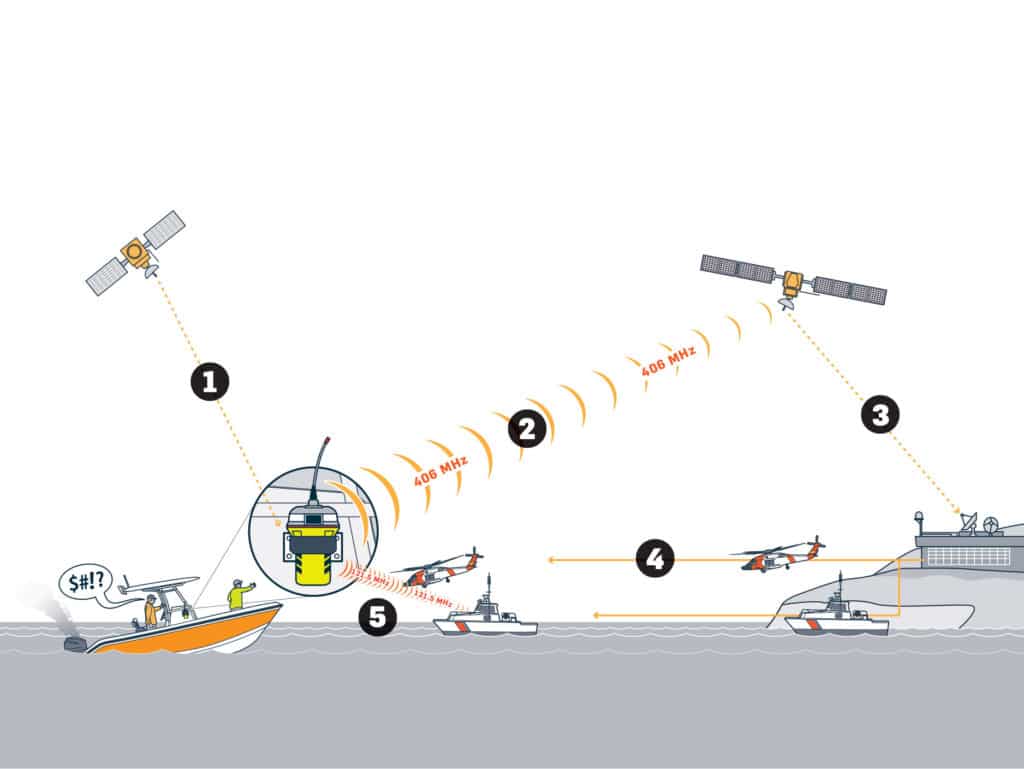
1. A GPS in the EPIRB receives position data from GPS satellites.
2. Activated EPIRB uplinks to rescue-alert satellites on a 406 MHz frequency.
3. Satellites downlink data to a rescue-coordination center.
4. Rescue agencies respond to alert from rescue center.
5. The EPIRB’s 121.5 MHz signal helps pinpoint the location.
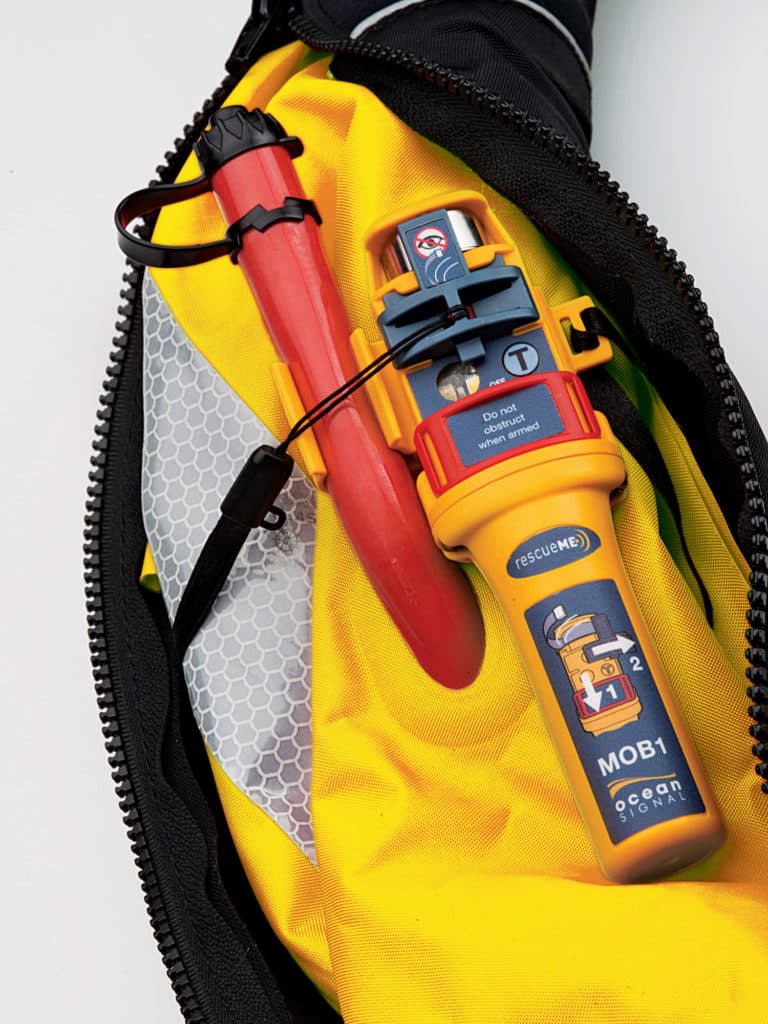
There’s a category of personal locators known as MOB devices. These use automatic identification system (AIS) to locate a man overboard (MOB).
The Ocean Signal MOB1 and McMurdo Smartfind S20 AIS MOB, for example, both attach to inflatable life jackets. The MOB1 activates upon inflation, while the S20 requires manual activation.
They transmit GPS position data and other information to AIS receivers and plotters in range for 24 hours. The MOB1 also sends a DSC distress signal. To be effective, both need an MMSI number.
Like a DSC distress alert, these devices can lead to a quick rescue because they allow nearby AIS-equipped vessels to assist in the search. However, since AIS signals are transmitted over VHF, range might be limited, depending on radio output and conditions.




